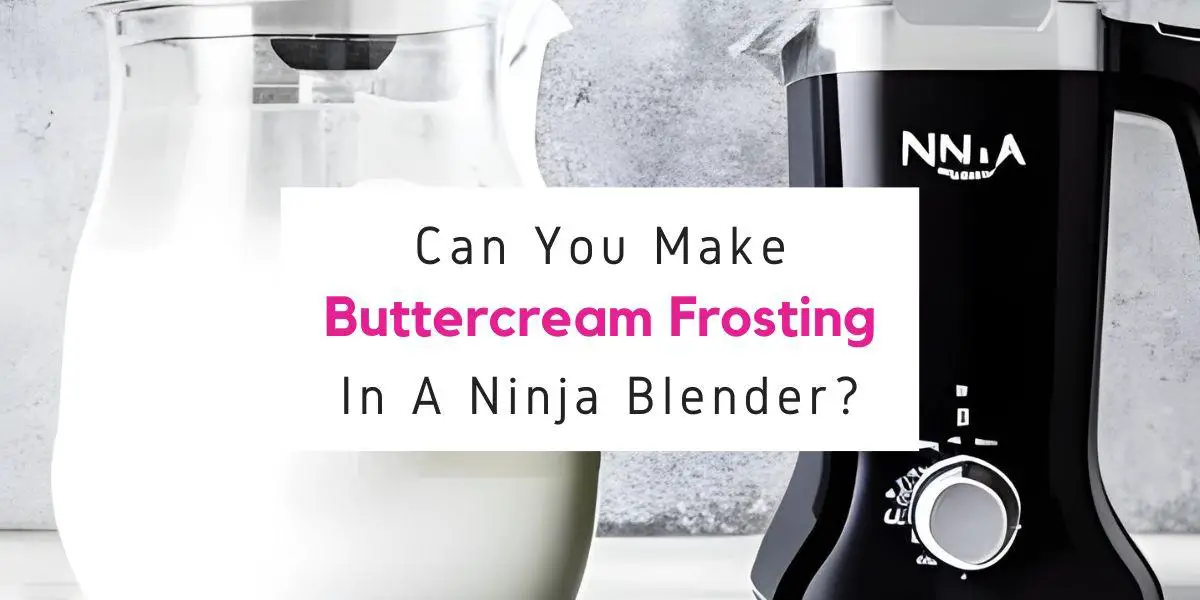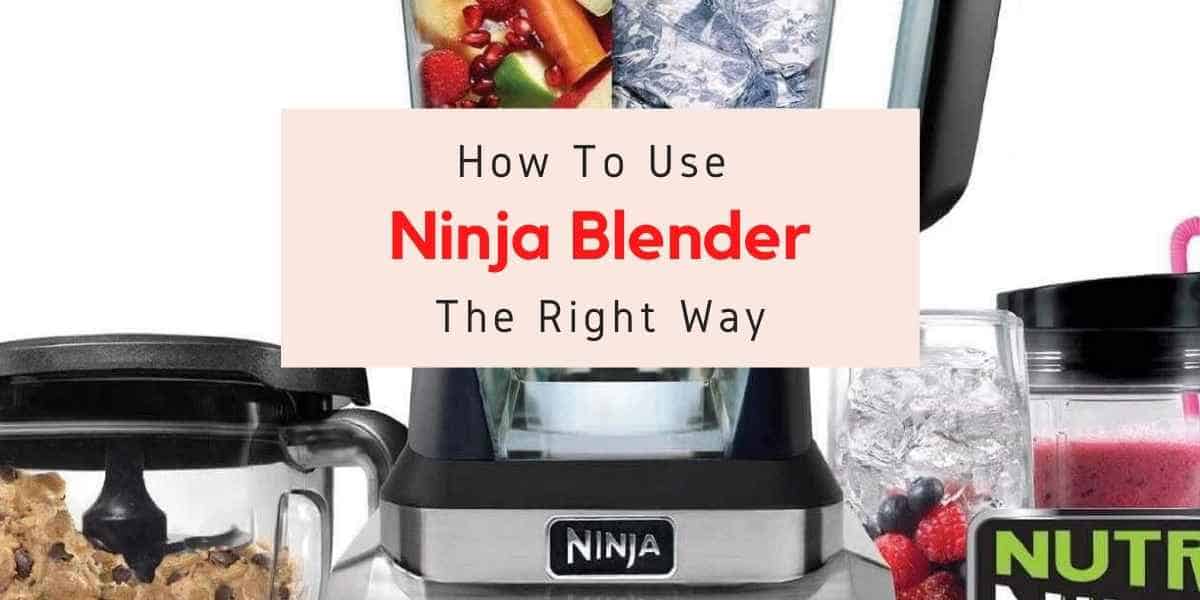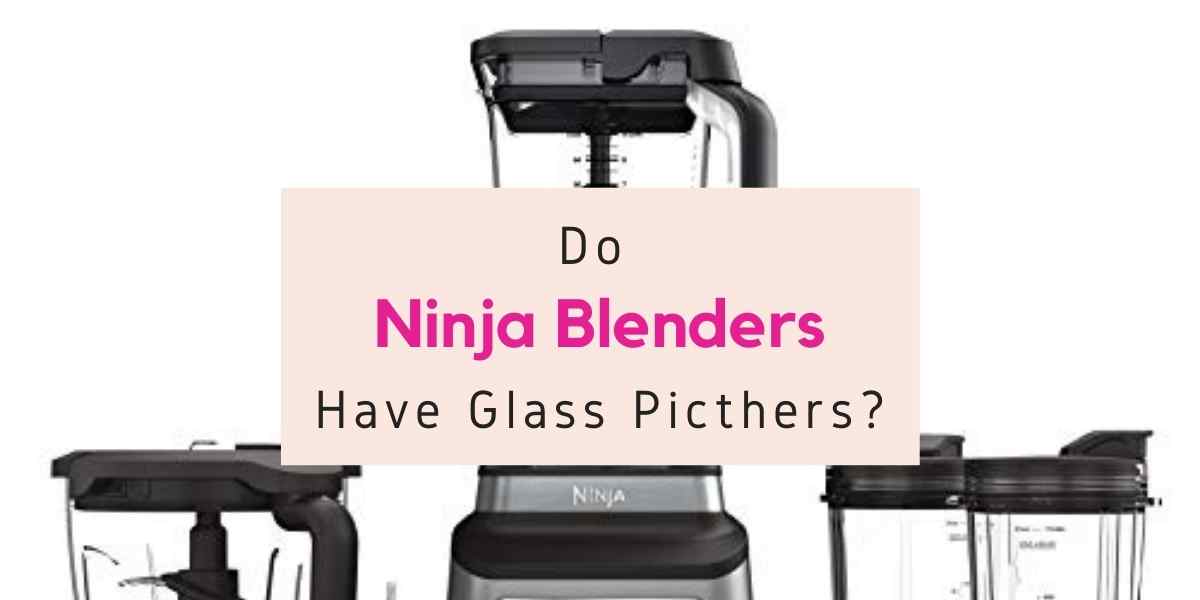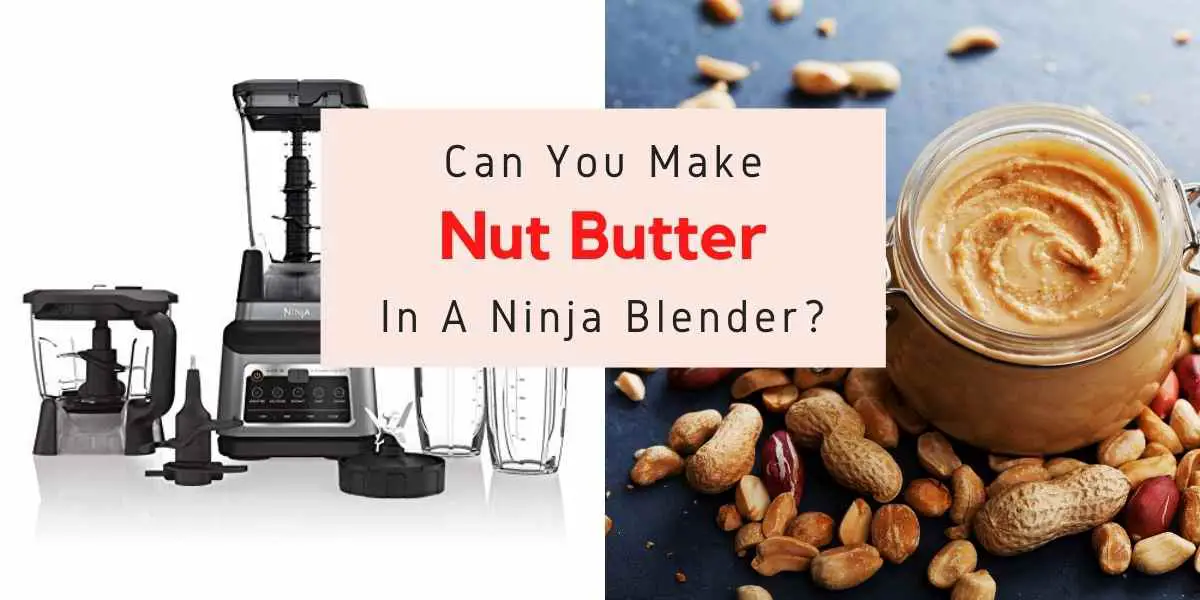Buttercream frosting is a classic cake topping that can be made with just a few simple ingredients. But what if you don’t have a mixer or don’t want to dirty any dishes? Can you make buttercream frosting in a Ninja blender? The answer is yes! You can make this delicious frosting in just minutes using your Ninja blender. Give it a try and see for yourself how easy it is!

What Is Buttercream Frosting And Why Is It So Popular?
Buttercream frosting is a type of icing made with butter, sugar, and milk or cream. It’s smooth, creamy, and can be flavored with various extracts and spices.
Buttercream frosting is popular for both its taste and its versatility. It can be used to pipe decorations, fill and frost cakes, or simply spread on top of cupcakes.
The key to making a good buttercream frosting is to start with softened butter so it will blend easily with the other ingredients. Once the butter is creamed, the sugar is added gradually until it’s fully incorporated.
Then, the milk or cream is added until the desired consistency is reached. Finally, any flavorings are added in.
Can You Make Buttercream Frosting In A Ninja Blender?
You betcha! In fact, you can make a lot of frostings and icings in a Ninja blender. Buttercream is one of the easiest to make, and it’s so versatile. You can flavor it with all sorts of different things, or just keep it simple with vanilla or chocolate.
Give it a try – your family and friends will be amazed at how easy it is to make this delicious classic frosting.
How To Make Buttercream Frosting In A Ninja Blender
Making buttercream frosting in a Ninja Blender is a quick and easy process. Here’s a basic recipe for you to follow:
Ingredients
- 1 cup (2 sticks) unsalted butter, softened
- 4 cups powdered sugar
- 1 teaspoon vanilla extract
- 2-4 tablespoons milk or heavy cream
- Optional: food coloring for tinting
Instructions
- Prepare the Ingredients: Make sure the butter is softened at room temperature. This will make it easier to blend. Measure out the powdered sugar, vanilla extract, and milk or cream.
- Add Butter and Vanilla: Start by adding the softened butter and vanilla extract to the Ninja Blender. This is where most of the mixing will take place.
- Blend: Close the blender lid securely and start blending on a low setting. Gradually increase the speed to medium or medium-high. Let the butter blend until it’s creamy and smooth, usually about 1-2 minutes.
- Add Powdered Sugar: Gradually add the powdered sugar, about 1 cup at a time, into the blender while it’s still running on a low speed. This will help prevent a cloud of sugar dust. Scrape down the sides of the blender jar as needed to ensure everything is mixed evenly.
- Adjust Consistency: After adding all the powdered sugar, check the consistency of your buttercream. If it’s too thick, you can add milk or heavy cream, 1 tablespoon at a time, while the blender is still running until you reach your desired consistency. Keep in mind that you can always add more liquid, but you can’t easily fix an overly thin frosting.
- Blend Until Smooth: Continue blending the buttercream on a medium-high speed for an additional 1-2 minutes to ensure that everything is well incorporated and the frosting is smooth.
- Taste and Adjust: You can taste the frosting at this point and adjust the flavor by adding more vanilla if desired.
- Optional: Add Food Coloring: If you want to color your buttercream, you can add a few drops of food coloring and blend again until the color is evenly distributed.
- Transfer and Use: Once your buttercream frosting is ready, transfer it to a bowl and use it to frost your cakes, cupcakes, or other baked goods as desired.
Remember, the Ninja Blender can be quite powerful, so be cautious when blending to avoid overmixing or overheating the frosting. If you’re concerned about the consistency or if the frosting is too warm due to blending, you can chill it in the refrigerator for a short while before using.
The Benefits Of Making Your Own Buttercream Frosting
Making your own buttercream frosting offers several benefits compared to store-bought alternatives:
- Freshness and Flavor Control: When you make your own buttercream frosting, you have complete control over the ingredients and their quality. You can use fresh, high-quality butter, vanilla extract, and other flavorings, resulting in a frosting with a rich and authentic taste.
- Customization: Homemade buttercream allows you to customize the flavor and texture to your liking. You can experiment with different flavor extracts, such as almond, lemon, or mint, to create unique variations. You can also adjust the sweetness and consistency to match your preferences.
- No Artificial Additives: Many store-bought frostings contain artificial colors, flavors, and preservatives. When you make your own, you can avoid these additives and create a frosting that is free from artificial ingredients.
- Allergen Control: If you or someone you’re baking for has allergies or sensitivities, making your own buttercream frosting allows you to choose ingredients that are safe for your needs. You can opt for dairy-free butter substitutes and ensure there is no cross-contamination with allergens.
- Quality Ingredients: Homemade buttercream frosting gives you the opportunity to use high-quality ingredients, such as real butter and pure vanilla extract. This can significantly enhance the taste and texture of the frosting.
- Texture and Consistency: Making your own frosting allows you to control the texture and consistency. You can make it lighter and fluffier or denser and richer, depending on your intended use.
- Cost-Effectiveness: Homemade buttercream frosting can be more cost-effective in the long run, especially if you regularly bake or need larger quantities of frosting. The individual components of buttercream, like butter, powdered sugar, and flavorings, are often less expensive than pre-made frostings.
- Personal Satisfaction: There’s a sense of accomplishment and satisfaction in creating something from scratch. Making your own buttercream frosting lets you be part of the baking process from start to finish.
- Skill Development: Mastering the art of making buttercream frosting can improve your baking skills. You’ll learn about ingredient ratios, flavor balancing, and texture manipulation, which can be valuable for various baked goods.
- Tailored to Occasions: Homemade buttercream frosting can be tailored to different occasions. You can make it festive with various colors for birthdays, holidays, or other special events.
- Artistic Expression: Decorating cakes and cupcakes with your own buttercream allows you to express your creativity. You can experiment with different piping techniques and designs to make your treats visually appealing.
In summary, making your own buttercream frosting provides you with control over the ingredients, flavors, and textures, resulting in a higher-quality, customizable, and more enjoyable end product. It’s a skill that empowers you to enhance your baking and culinary experiences.
How To Decorate A Cake With Buttercream Frosting

Decorating a cake with buttercream frosting can be a delightful and creative process. Here’s a step-by-step guide to help you decorate your cake beautifully:
Materials Needed
- Buttercream frosting (colored as desired)
- Cake layers (already baked and cooled)
- Cake turntable (optional but helpful)
- Offset spatula
- Piping bags
- Piping tips (various sizes and shapes)
- Optional: Cake smoother, bench scraper, fondant (for additional decorations), edible decorations (sprinkles, flowers, etc.)
Instructions
- Prepare Your Cake: Ensure your cake layers are baked, completely cooled, and leveled. You can trim the tops of the layers if needed to create an even surface.
- Crumb Coat: Apply a thin layer of buttercream frosting all over the cake to create a crumb coat. This initial coat helps trap any loose crumbs and provides a smooth base for the final layer of frosting. Use an offset spatula to spread the frosting evenly.
- Chill the Cake: Place the cake in the refrigerator for about 15-20 minutes to allow the crumb coat to set. This makes it easier to apply the final layer of frosting without picking up crumbs.
- Apply the Final Layer of Frosting: Take the cake out of the refrigerator and apply a generous layer of buttercream frosting to the cake. Start with a dollop of frosting on top of the cake and use an offset spatula to spread it out and down the sides of the cake. Aim for a smooth and even layer of frosting.
- Smooth the Frosting: For a professional finish, use a cake smoother or bench scraper. Hold it against the sides of the cake while turning the cake on a turntable. This technique helps create a clean and polished look.
- Piping Techniques: If you want to add piped decorations, prepare your piping bags with the desired tips. Here are a few common techniques you can use:
- Borders: Pipe decorative borders along the top and bottom edges of the cake using various tips for different patterns.
- Rosettes: Create buttercream rosettes by starting with a small swirl in the center and spiraling outward.
- Swirls and Stars: Use a star tip to pipe swirls or stars for textured designs.
- Writing: If you’re adding a message, use a small round tip to pipe letters or words onto the cake.
- Texture and Accents: Get creative by adding texture to the cake. You can use an offset spatula or other tools to create patterns like waves or lines in the frosting. Additionally, consider adding edible decorations like sprinkles, colored sugar, or edible flowers for extra flair.
- Personal Touches: Feel free to experiment with different piping tips, colors, and designs to match the occasion or theme. Adding your personal touch makes the cake even more special.
- Fondant Decorations: If you’re comfortable working with fondant, you can create intricate shapes and decorations to place on the cake. Fondant can be molded into various shapes and then applied to the cake’s surface.
- Display and Enjoy: Carefully transfer the decorated cake to a cake board or serving platter. Be gentle to avoid smudging the frosting. Display your masterpiece and share it with others!
Remember, cake decorating is an art that improves with practice. Don’t be discouraged if your first attempt isn’t perfect. The more you practice, the more confident and skilled you’ll become at creating stunning buttercream-frosted cakes.
Variations On Traditional Buttercream Frosting Recipes
There are many variations on traditional buttercream frosting recipes. Here are some ideas:
- Chocolate Buttercream: Add cocoa powder or melted chocolate to your buttercream frosting for a rich chocolate flavor. For a smoother consistency, make sure to sift the cocoa powder before adding it to the frosting.
- Cream Cheese Buttercream: Combine the richness of buttercream with the tanginess of cream cheese. Mix softened cream cheese with butter and powdered sugar for a delightful and slightly tangy frosting. This works well for carrot cakes, red velvet cakes, and more.
- Citrus Zest Buttercream: Add the zest of lemons, oranges, or limes to your buttercream for a refreshing and aromatic twist. Citrus zest can bring a vibrant and unique flavor to your frosting.
- Coffee or Espresso Buttercream: Mix in instant coffee or espresso powder to create a coffee-flavored buttercream. This is a great option for mocha cakes or to complement chocolate flavors.
- Fruit Puree Buttercream: Incorporate fruit purees like raspberry, strawberry, or mango into your buttercream for a burst of fruity flavor. Just make sure the puree is well strained to avoid excess moisture.
- Nut-Flavored Buttercream: Add nut flavorings like almond, hazelnut, or pistachio to your buttercream. These flavors work well with a variety of cakes and cupcakes.
- Maple Buttercream: Substitute some or all of the vanilla extract with pure maple syrup for a cozy, autumn-inspired frosting.
- Lavender or Floral Buttercream: Infuse your buttercream with floral flavors by adding culinary-grade lavender, rosewater, or other edible flower extracts. Be cautious with the amount, as floral flavors can be strong.
- Spice-Infused Buttercream: Incorporate warm spices like cinnamon, nutmeg, or cardamom into your buttercream for a cozy and aromatic touch. This pairs well with spiced cakes.
- Coconut Buttercream: Add coconut extract or coconut cream to your buttercream for a tropical flavor. You can also fold in shredded coconut for added texture.
- Herb-Infused Buttercream: Experiment with herbs like basil, mint, or thyme by infusing them into your buttercream. This can create unique and unexpected flavor profiles.
- Salted Caramel Buttercream: Incorporate homemade or store-bought salted caramel sauce into your buttercream for a balance of sweet and salty.
When experimenting with variations, start with small amounts of the flavoring and adjust to taste. Always consider the cake or baked good you’re pairing the frosting with to ensure the flavors complement each other well. Remember that the consistency of the frosting may be affected by the additional ingredients, so you might need to adjust the amount of powdered sugar or liquid accordingly.
Tips For Getting The Perfect Buttercream Frosting Every Time
Achieving the perfect buttercream frosting consistency and flavor can take practice, but here are some tips to help you consistently create delicious and smooth buttercream frosting:
- Use High-Quality Ingredients: Start with good-quality unsalted butter, pure vanilla extract, and fresh powdered sugar. High-quality ingredients can greatly impact the taste and texture of your buttercream.
- Properly Soften the Butter: Make sure your butter is at the right temperature. It should be softened but not melted. Leave it at room temperature for about 30-60 minutes before starting.
- Sift the Powdered Sugar: Sifting powdered sugar helps remove lumps and ensures a smoother texture in your frosting. It also makes it easier to incorporate into the butter.
- Gradually Add Powdered Sugar: Add the powdered sugar gradually, about 1 cup at a time, and mix well before adding more. This prevents a cloud of sugar dust and allows the ingredients to blend evenly.
- Mixing Speed: Start mixing the butter and sugar on low speed to avoid splattering, then gradually increase the speed to medium or medium-high for a few minutes until the mixture is light and fluffy.
- Texture Control with Liquid: Adjust the consistency of the frosting by adding milk, cream, or another liquid. Add liquid a tablespoon at a time until you reach the desired texture. Keep in mind that you can always add more liquid, but you can’t easily thicken an overly thin frosting.
- Don’t Overmix: Overmixing can incorporate too much air, leading to a lighter but less stable frosting. Stop mixing as soon as the ingredients are well combined and the frosting is smooth.
- Avoid Overheating: If using a stand mixer or blender, avoid overworking the butter, as this can lead to the frosting becoming too warm and soft. This is especially important in warmer climates.
- Add Flavor Gradually: If adding extracts, flavors, or colorings, do so gradually. Start with a small amount and adjust until you achieve the desired flavor or color.
- Use a Turntable and Spatula: A cake turntable and offset spatula can help you apply and smooth the frosting more evenly and easily.
- Crumb Coat: Apply a thin layer of frosting as a crumb coat before adding the final layer. This helps trap loose crumbs and creates a smoother surface for the top layer.
- Chill for a Few Minutes: After applying the crumb coat and final layer, chill the cake in the refrigerator for about 15 minutes. This helps the frosting set and makes it easier to apply additional layers or decorations.
- Experiment with Piping Techniques: If you’re using piping techniques, practice on a separate surface before applying them to the cake. Experiment with different tips to create various patterns.
- Consistency for Piping: If you’re piping decorations, make sure your buttercream is at the right consistency. Stiffer frosting holds its shape better for intricate piping designs.
- Practice Makes Perfect: Buttercream frosting mastery comes with practice. Don’t be discouraged by early attempts – each effort brings you closer to perfecting your technique.
Remember, every baker has their own preferences, so don’t be afraid to adjust recipes and techniques to suit your taste and style. With time and practice, you’ll develop the skills to consistently achieve the perfect buttercream frosting every time.
Final Verdict – Can You Make Buttercup Frosting In A Ninja Blender?
You can make buttercream frosting in a Ninja Blender, but there are a few things to consider.
Ensure the blender has enough capacity for your batch, start on a low setting, and monitor blending time to avoid overheating and overmixing. Scraping down the sides and adjusting consistency might be necessary.
While Ninja Blenders are powerful, they might not offer the same level of control as stand mixers for maintaining ideal texture, especially if making large quantities. Always refer to your specific blender’s manual for guidance.



